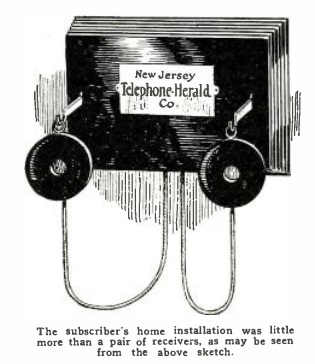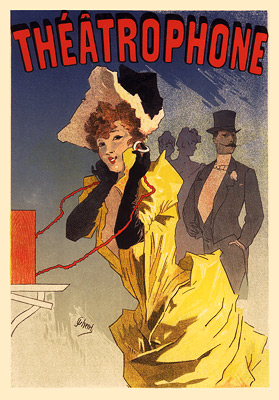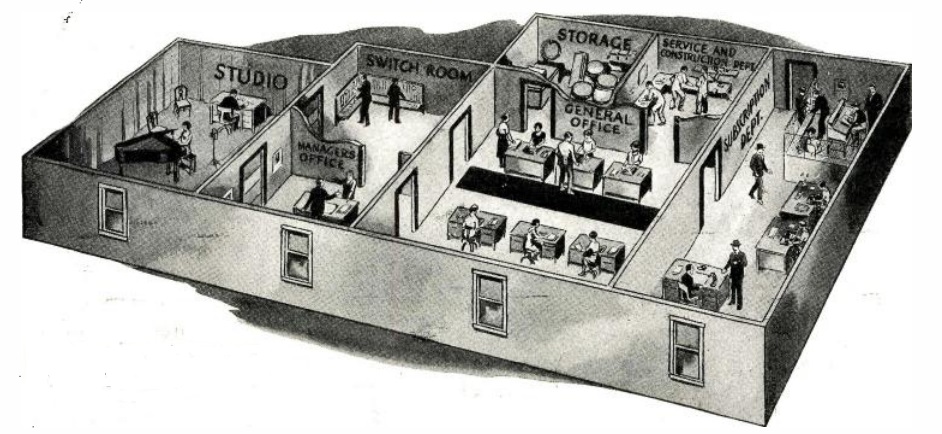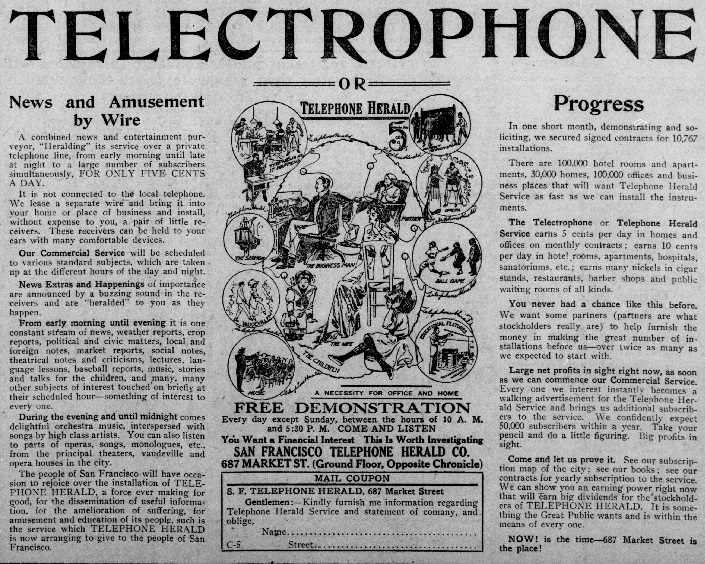Most will be surprised to learn when the first broadcasts took place. In other words, people in their homes could, for the first time, listen to music, news, or entertainment originating from a central studio. The answer, it turns out, is Paris in 1891, when the Theatrophone first started broadcasting.
The Theatrophone didn’t use radio–it broadcast programs to subscribers’ homes by telephone line into a dedicated telephone instrument. Surprisingly, despite the later competition from radio, the Paris Theatrophone held on until 1932. Similar systems were soon in operation in Budapest and London.
In about 1911, a group of New Yorkers were traveling in Budapest and were surprised to find the service available in their hotel. Upon doing some investigation, they decided to offer a similar service. It was decided to install the new system in Newark, New Jersey, and later expand to New York. They formed the New Jersey Telephone Herald Company and began operations either in late 1911 or early 1912.
 The drawings of the home receiver instrument and main studio shown here are from the June 1925 issue of Radio News. The article notes how similar the studios of the Telephone Herald were to those of a radio broadcast station of 1925. Broadcasting took place from 9:00 AM to 11:00 PM daily, and included, music, news, market reports, and even bedtime stories.
The drawings of the home receiver instrument and main studio shown here are from the June 1925 issue of Radio News. The article notes how similar the studios of the Telephone Herald were to those of a radio broadcast station of 1925. Broadcasting took place from 9:00 AM to 11:00 PM daily, and included, music, news, market reports, and even bedtime stories.
The company leased telephone lines from the New York Telephone Company in order to bring the service to individual city blocks. From that point, the Herald had its own lines to run the programs to individual subscriber homes. There were some mechanical amplifiers used in the distribution process, consisting of telephone receivers and transmitters connected by a rod. The main downfall of the system was the limitations in amplifying the telephone signal, which could never get above headphone volume. As the Radio News article pointed out, the system would have worked quite well had vacuum tube amplifiers been available. But they were a few years off, and radio had a firm hold on broadcasting by the time they were available.
Interestingly, the New York Telephone Company was initially unwilling to lease the lines, and the Telephone Herald had to go to the New Jersey Board of Public Utility Commissioners to force the telephone company to lease the lines. The Commision agreed with the Telephone Herald. The Commission held that the Telephone Herald was not a “public utility,” but instead just another telephone customer, and they telephone utility was obligated to make the lines available on the same terms as for any other customer.
The price of the service was $1.50 per month, or “five cents per day,” as the marketing people put it. At its peak, the New Jersey system had about 5000 subscribers. However, as the novelty wore off, many subscribers defected, and the service seems to have ended by the end of 1912.
A similar service, the Oregon Telephone Herald, was operated in Portland, Oregon, in 1912. The 1913 advertisement shown below is for the San Francisco Telephone Herald Company, which apparently never began operations, but planned a similar service.
References
Click Here For Today’s Ripley’s Believe It Or Not Cartoon ![]()



